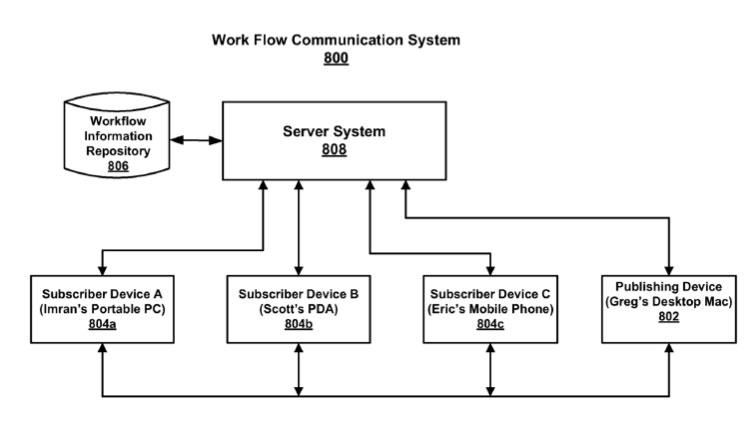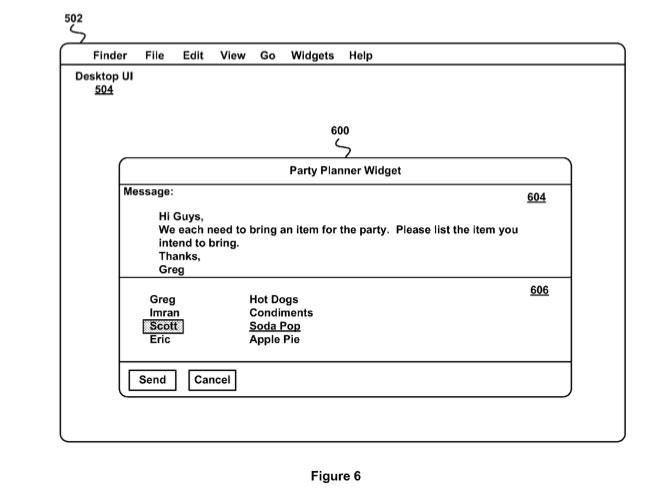Apple exploring cloud-based, cross-platform, touch-capable widgets
In May, Apple filed a continuation for its patent application entitled "Workflow Widgets," which describes a system that would allow users to launch a widgets on one device, and access it from a second device. The document describes widgets that could be displayed on a variety of devices, including desktops (Mac OS X, Windows and Linux are named), Web browsers, and "multi-touch sensitive displays," including phones and other portable devices.
"For illustrative purposes, widgets (including linked widgets) are described as a feature of an operating system," the application reads. "Workflow widgets, however, can be implemented in other contexts as well, including e-mail environments, desktop environments, application environments, hand-held display environments and any other display environments."
The application notes that the "simplicity and utility" of widgets makes them advantageous to more "traditional workflow technologies" such as e-mail and instant messaging.
The invention describes a server that would host the widget dashboard. Client computers and devices would access this server and display their appropriate widgets, obtaining information that may have been created or settings that may have been configured on another machine.
While this could allow information or settings to be synced across multiple devices for one user, it could also allow for collaboration between multiple users. In one example, Mac OS X is shown with a "Party Planner Widget," which would allow attendees to RSVP or add information such as what food they will be bringing to a gathering.
It also describes dashboard clients that would "omit conventional interface features such as a menu bar, window frame, and the like."
In addition, there are a number of other applications and granted patents related to the "Workflow Widgets" document, first filed in 2006, suggesting that Apple has shown considerable interest in this area. They include inventions for "Linked Widgets," "Multiple Dashboards," and "Widget Security."
Earlier this year, it was suggested that Apple could add widgets to iOS, and specifically to its newly launched iPad, when the company began removing widget applications from the App Store. Coincidentally, on Thursday Apple shed more light on why those applications were rejected, when it published its App Store Review Guidelines.
"Apps that create alternate desktop/home screen environments or simulate multi-app widget experiences will be rejected," the official rules read.
The prospect of Apple-branded mobile widgets was further supported by the fact that the iPad does not include applications found standard on the iPhone, including Stocks, Weather and Clock, that would be well suited to a widget interface. An early version of the iOS 3.2 software development kit for the iPad also hinted at the inclusion of widgets.
Apple first introduced the Mac OS X Dashboard and accompanying widgets with Mac OS X 10.4 Tiger. Based on HTML, CSS and JavaScript, they are essentially tiny webpages that are rendered through WebKit, the engine behind Apple's Safari browser.
 Neil Hughes
Neil Hughes












 Wesley Hilliard
Wesley Hilliard
 Andrew Orr
Andrew Orr



 Amber Neely
Amber Neely

 William Gallagher
William Gallagher







